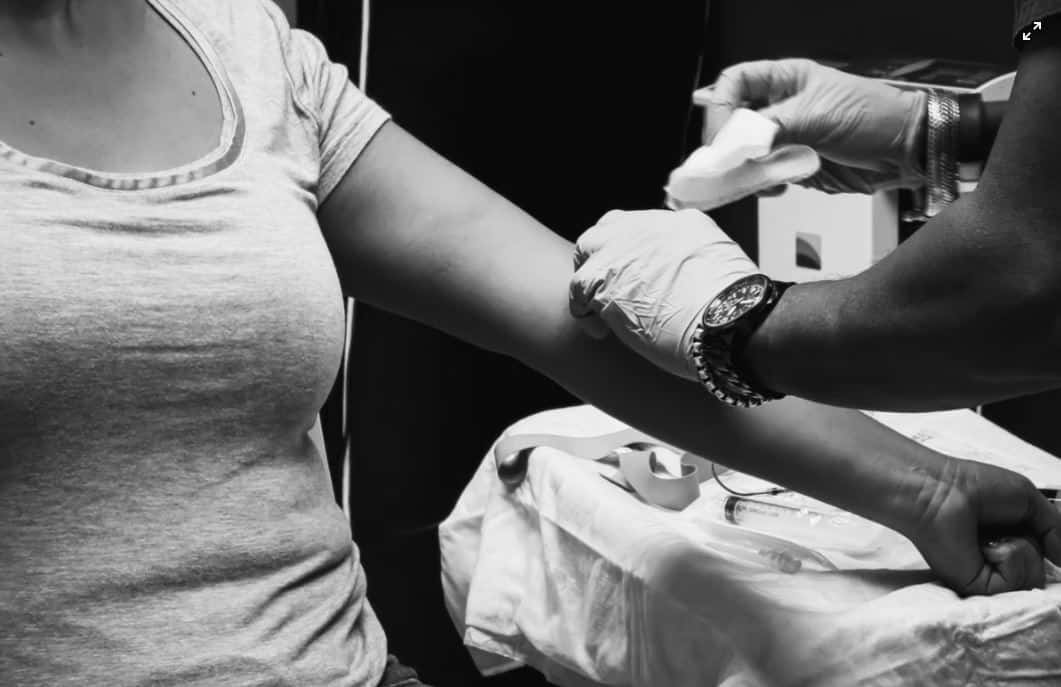
17
MarGive What You Can
 Mask? Check. Short-sleeved sweater? Check. Wool lap blanket? Check. Wool hat? Check. Thick socks? Check. Earphones and phone fully charged? Check. Left-hand glove? Tums? Iron pills? Check check check.
Mask? Check. Short-sleeved sweater? Check. Wool lap blanket? Check. Wool hat? Check. Thick socks? Check. Earphones and phone fully charged? Check. Left-hand glove? Tums? Iron pills? Check check check.
This is my checklist for assembling my accessories bag when donating platelets. The onset of the pandemic in the US in early 2020 led to an immediate drop in blood donations to the Red Cross. At the same time, I and many other people were feeling powerless to help our overwhelmed medical systems, so when the Red Cross began pleading for donors to help replenish dwindling blood supplies, I started donating again – something I hadn’t done with any regularity for years. Then, during the 2022 holiday season, news outlets ran stories about how rising COVID concerns were once again leading to record-low donation rates and supplies of blood and blood products.
One marketing campaign in particular caught my eye: how to make the biggest impact with your donation, based on blood type. Donating blood is wonderful, giving, and absolutely vital to saving lives. Blood drives are scheduled for easy access in community centers, churches, workplaces, and empty storefronts throughout our communities, plus the Red Cross operates various regional dedicated donation centers. Many hospitals, clinics, and medical centers will also happily take donations, so you can give directly where blood donations are needed.
Blood is the most familiar kind of donation people are aware of, and one of the quickest. According to the Red Cross, someone in the US needs blood every two seconds, including accident and burn victims, sickle cell and surgery patients, and organ recipients. However, whole blood is only one way to give to help save lives, and while whole blood donations from every blood time are appreciated, some blood types can do even more good by making different kinds of donations.
The Red Cross takes several types of blood product donations: whole blood, Power Red, plasma and platelets. Power Red donations are concentrated donations of red blood cells and are typically given to trauma patients, newborns and emergency transfusions during birth, people with sickle cell anemia, and anyone suffering blood loss. Recommended donors include those with O positive, O negative, A negative, and B negative blood types. Plasma is most often taken from AB positive and AB negative donors because plasma from these blood types can, somewhat counterintuitively, be given to all other blood types. Plasma donations, also known as AB Elite donations, are used in emergency and trauma situations to help stop bleeding. Platelets are the tiny cells in your blood that allow you to clot to stop bleeding after an injury, and in a hospital setting they are a vital element of cancer treatments and organ transplant procedures, as well as other surgical procedures. Ideal blood types for platelet donations are A positive, A negative, B positive, O positive, AB positive, and AB negative.
Seeing that my maximum impact as a donor can be made by donating platelets, I made my first trip to a donation center on Christmas Day 2022. At a platelet donation, you first meet with a technician (aka phlebotomist, aka rock star) and are screened for any health concerns to make sure you’re well enough to donate. You have a chance to ask any questions about the donation process, and then after a quick trip to the bathroom (I sincerely recommend taking the offer of a restroom pitstop), you’re settled into a lounging chair and hooked up to an apheresis machine. This machine separates out your platelets and a little bit of plasma and returns the rest of your blood back into your body. At the end of your donation you get a snack before heading on your merry way.
If you meet all the eligibility criteria for donating blood and you have the time – the entire visit can take 2.5-3 hours – I recommend giving platelets at least once to get the experience. And, if you make it through your first donation, try it again; platelets can only be stored for a few days before they must be used, and many cancer patients undergoing chemotherapy cannot continue their treatments without receiving platelet donations.
And why do I need to go into the donation center armed to the teeth with technology and cold weather gear? I take an iron supplement the day before and the day of my donation because occasionally I don’t meet the Red Cross’s baseline measure of hemoglobin. The donation center keeps a steady supply of Tums on hand because donors sometimes report a tingling numbness sensation – I usually feel it in my lips and tongue – that is caused by a chemical used in the apheresis process. After all, platelets are the cell that causes blood to clot therefore by nature are quite sticky, and the center needs to make sure your platelet donation doesn’t clot before it can be used. Thus, a chemical is used to suspend these cells in solution, and a little can be introduced back into your blood system. Calcium, a major ingredient of Tums, quickly counteracts the resultant tingling sensation.
The donation process can altogether take up to 3 hours, but donors can expect to be sitting in the donation chair for just over an hour to just over 2 hours, on average. Most centers provide streaming services and a DVD player for donors to watch shows and movies, but personally I have found audiobooks borrowed from the library to be the best boredom busters; visit Libby or Hoopla to browse our latest selection.
Finally, and for me this is the most unusual part of the platelet donation process, dressing in warm clothing and covering in blankets is one of the most important steps for the donor, since the donation process actually makes you cold. During platelet donation blood is drawn from one arm, run through the apheresis machine to separate the platelets, and then returned to your other arm. Your blood isn’t in the machine for long but it’s outside of your body long enough to begin cooling down, and when it’s reintroduced your body starts to cool from the inside out. It is essential that you don’t move your arms at all during the process, and I’ve found that the hand of my return arm (my left) must be gloved to stay warm.
Give donation a try, whatever form that donation takes. There is a constant need for blood units for patients yet only about 3% of age-eligible adults give each year, according to the Red Cross. In addition to the Red Cross, many hospitals and medical centers also take donations, so inquire locally or ask your doctor to find other donation locations. Every little bit helps, and it’s a powerful thing.
Liz Reed is the Head of the Adult Services Department at the Morrill Memorial Library in Norwood, MA. Look for her article in the March 17, 2022 issue of the Transcript and Bulletin.








